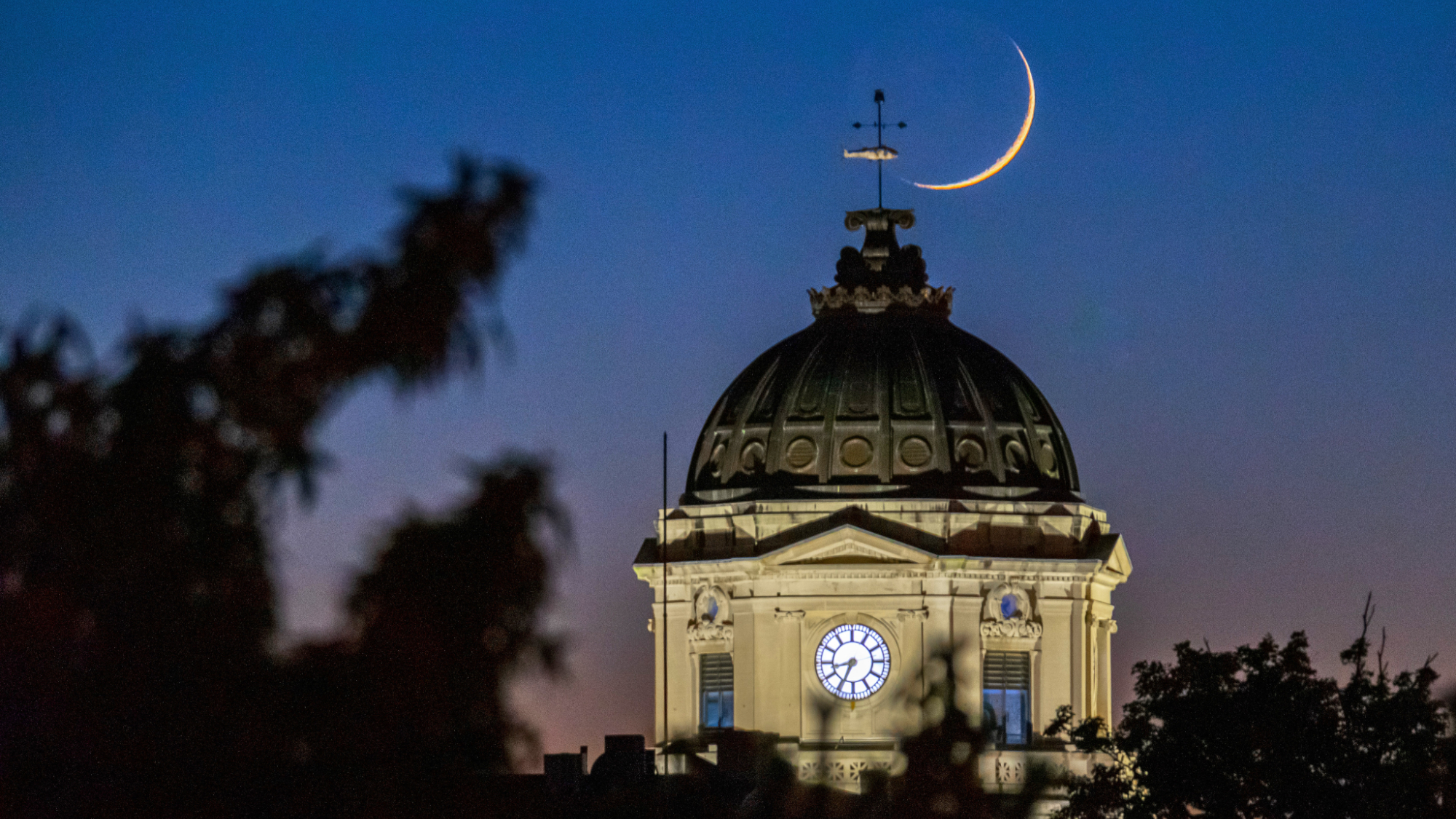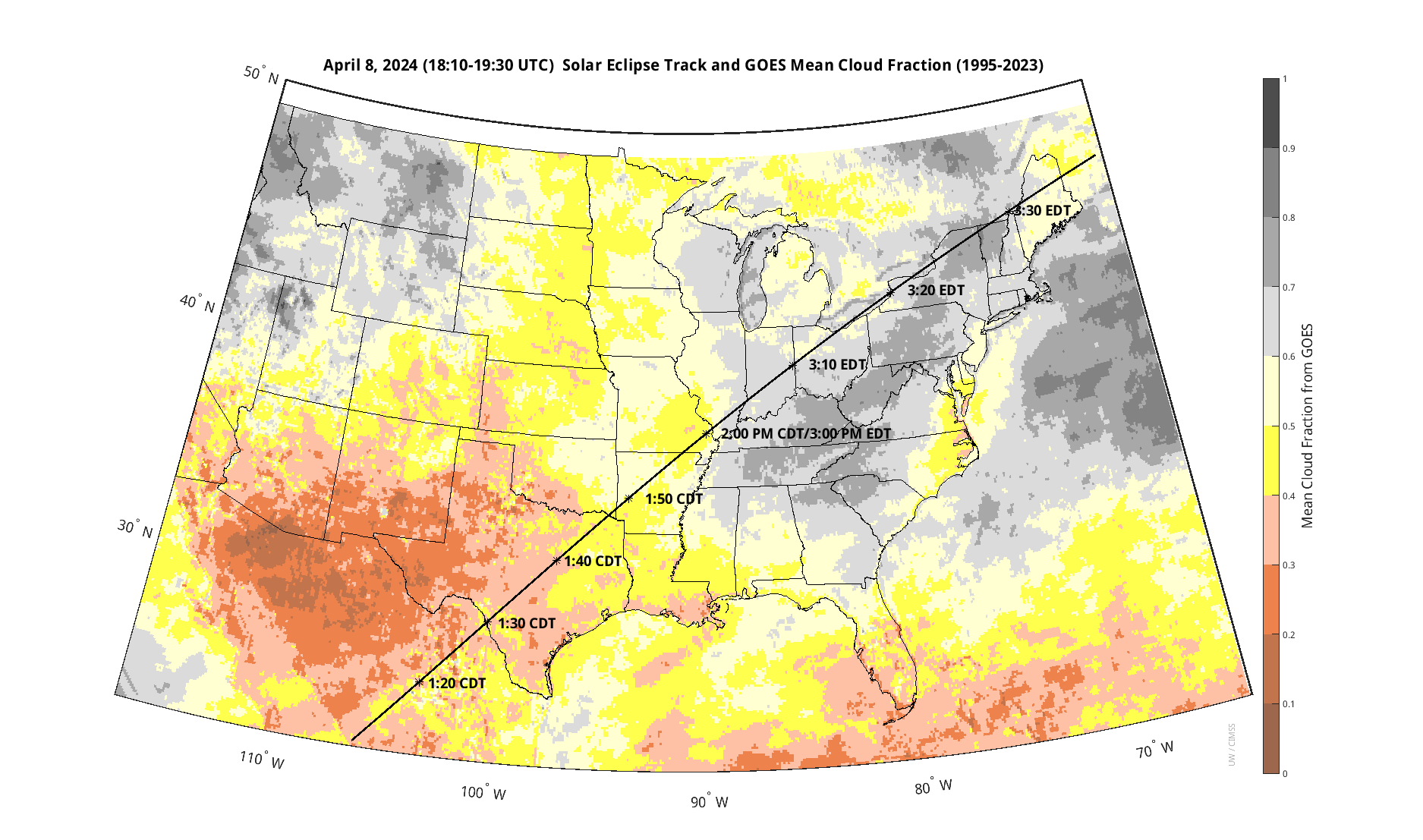
BLOOMINGTON, IND. — I did not expect to be where I am today.
As a space reporter, I have spent the better part of the past decade floundering back and forth about moving to Florida to live on the Space Coast, where I could attend all the rocket launches and put myself in the thick of where so much space news takes place. But alas, for a number of reasons, both personal and professional, I have remained content where I am.
In 2017, shortly after I moved to my current residence, I traveled to Fulton, Missouri, to witness my first total solar eclipse. It was a four-hour drive getting there the night before, and, given the popularity of the event, the accommodations I was able to reserve were far below five-star. However, I was there to witness an incredibly awesome celestial occurrence, so it didn’t matter that the sink blocked the bathroom door from closing.

The total solar eclipse that day was breathtaking. I captured some mostly passable photos and became filled with excitement for the next solar eclipse that would come seven years later. I wondered during my drive home that evening if I’d end up needing to travel for 2024’s eclipse. I knew I would either have to travel even farther next time (hopefully from Florida), or I wouldn’t have to travel at all.
I had just moved to beautiful Bloomington, Indiana, and whether or not I expected it at the time, I’m still here seven years later, sitting directly in the path of totality for the total solar eclipse on April 8.
Related: Here are the most amazing photos and videos of the 2017 solar eclipse
On that day, the moon will pass directly in front of the sun, casting its shadow onto the face of the Earth, creating nearly four and a half minutes of totality for spectators in its path across North America. Bloomington, like hundreds of cities and small towns along the path of totality, has been preparing for an onslaught of skywatchers on the big day. A true college town, Bloomington is home to roughly 80,000 people, almost half of whom are students of Indiana University (IU). And all 80,000 of us are bracing ourselves.
Local officials have estimated that up to 300,000 visitors may be traveling to Bloomington for the eclipse, and this town doesn’t even see those kinds of numbers for Little 500. The city has advised people to fill their gas tanks ahead of time, avoid unnecessary travel and prepare for possible cell phone outages due to the added congestion. You would think a blizzard was coming.
All that being the case, planning to watch the eclipse from Blomington, or really anywhere along the path of totality in the midwestern United States, comes with a pretty hefty risk. Historical cloud coverage in the region for April 8 does not paint a promising picture for seeing the sun that day, and that fact has been making me anxious.

Now, partly cloudy, or even mostly cloudy, doesn’t worry me as much as the possibility for completely overcast skies. Thankfully, even with moderate cloud cover, the eclipse won’t be a total wash. Coming along with the 300,000 other visitors to Bloomington for the eclipse are some pretty big names in space, thanks to an event organized by IU.
The Hoosier Cosmic Celebration is Bloomington’s giant eclipse watch party, being hosted by the university at the IU Memorial football stadium. Retired NASA astronaut Mae Jemison has been booked to speak, as has science fiction’s biggest captain, William Shatner, who played Captain Kirk on the original "Star Trek" series. Shatner also became the oldest person to travel to space when he launched on a suborbital Blue Origin flight on Oct. 13, 2021, and as part of the day’s festivities, IU has arranged for a Blue Origin New Shepard space capsule to be brought to the stadium and is offering ticket-holders a chance to experience a space simulation.
Following totality, singer, songwriter and actress Janelle Monáe is scheduled to perform, capping off the excitement of the day. In addition to the awesomeness that is throwing an eclipse concert at all, Monáe has their own unique connection to space. Monáe starred in the movie "Hidden FIgures," portraying NASA mathematician and engineer Mary W. Jackson.

Shatner recently celebrated his 93rd birthday and is as energetic as ever. He spoke with Space.com and other local Indiana press leading up to IU’s Cosmic Celebration, and he said that, rain or shine, we’re bound to experience something wonderful. "It's also perfectly possible that it will be a clear, bright, lovely, warm spring day, and we will all enjoy the benefits of the Hoosier weather. What happens if it's cloudy? I don't know. It's like looking into the pit of a volcano saying, 'What do we do about that thing?' And it's, nothing can be done. There's nothing can be done," he told reporters.
Darkness. Oh, the sun is going to be eclipsed. That alone is a monumental event. And you know, it happens every year. The [moon] gets in the way the sun every year, but effects some narrow part of the Earth. So, the next one over Indiana will be like 100 years from now. We'll all be dead. I might not be, but you guys are going to be dead the next time. So it's an event. But when you ponder the mystery of you pondered what's taking place in the heavens, it's gargantuan.
William Shatner
"To me, the magic of the eclipse, the extraordinary events it all took in the heavenly bodies to cause this eclipse, should make us ponder the mystery of existence, of our own existence, of the existence of everything else, and how unified everything is," Shatner said.
His part of the celebration is scheduled to take place just before totality. He’s yet to compile the entirety of what he plans to say, but expects it to last about 15 minutes, leading up to the moment of totality, when darkness falls across the sky. "My last words," Shatner said, "I'm sure will be, 'and now, the eclipse happens!'"
So, whatever happens, clouds or no clouds, I’ll be staying put. Bloomington has been my home longer than anywhere else I’ve lived in my adult life, and the fact that totality is passing right over my house is a celestial alignment I can’t take for granted. If you’re not in the path of totality, get there. An eclipse like this won’t pass over the U.S. for another 20 years, so this is not one to miss. I have a feeling it’s going to be a pretty memorable day.







